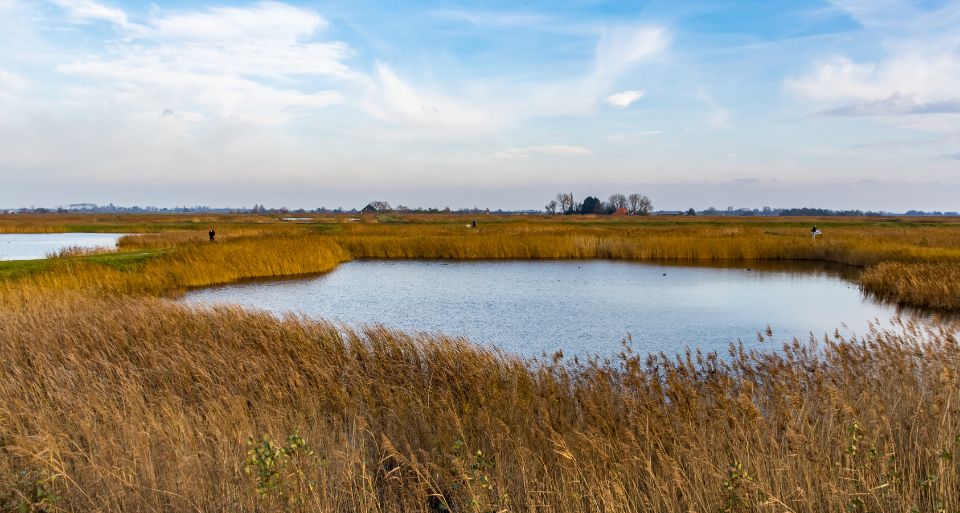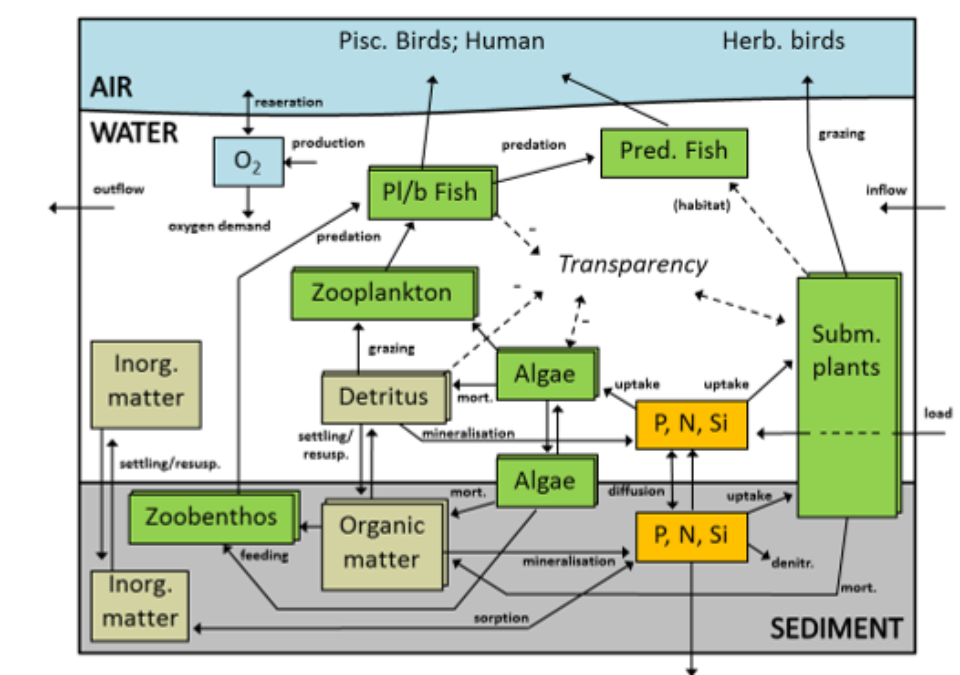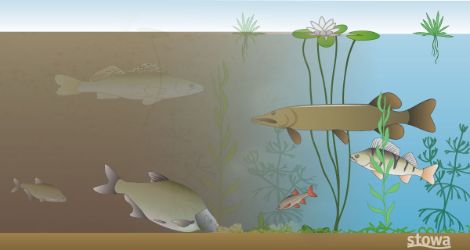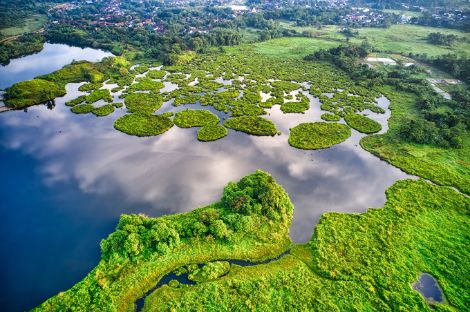PCLake & PCDitch
The surface water quality is worldwide under pressure due to urbanization, agricultural intensification and climate change. Excessive algal blooms, odors and toxic substance production make water less suitable for recreation, drinking water, irrigation and other functions, while there is an increasing demand for clean water. PCLake and PCDitch offer insight.

Customized measures
Sustainable restoration and management of water quality requires measures, but it is not always clear which measures will be effective. A measure may be decisive for sustainable restoration in one water system but counterproductive in another. Understanding the functioning of the water system is important for selecting the most cost-effective package of measures. The PCLake metamodel can be used to calculate the critical phosphate load for each type of lake. With PCDitch's meta-model, the critical phosphate load per linear water system, such as a ditch or canal, can be determined.

Each water system is unique
An important basis for this understanding is the realization that water quality is the result of the physical properties of the water system, such as size and depth, and a complex of hydrological, physico-chemical and biological processes. Each water system is characterized by a unique combination of these factors and processes and distinguishes itself from other water systems. In order to take into account the system-specific properties, it is important that system analyzes are carried out for each lake separately (N=1) so that a cost-effective package of measures can be defined.
The Key Ecological Factors (ESFs) offer a framework for performing good water system analyses. Key factors 1, 2 and 3 concern conditions for the occurrence of submerged aquatic plants. It concerns the productivity of the water, the light climate and the productivity of the (aquatic) soil. The ecological models of PCLake and PCDitch can be used, among other things, in the integral analysis of these ecological key factors.
Explanation of the PCLake and PCDitch Metamodels
Measures to achieve clean lakes and ditches are often costly, so you want to make sure you take the right ones. The metamodels of PCLake and PCDitch provide insights into the effect of measures in the lake or ditch that you want to improve. With PCLake and PCDitch you gain insights into the current situation and you can calculate how the water system will respond to certain measures.
Image: Janse, J. H. (2005). Model studies on the eutrophication of shallow lakes and ditches. Wageningen University and Research.
Cooperation
Both the PCLake model and the PCDitch model were developed by Jan Janse (Janse, 2005). Both models have been further developed by Witteveen+Bos, STOWA, NIOO-KNAW, Netherlands Environmental Assessment Agency and the WUR. PCLake has already been used successfully in several projects.

Why PCLake & PCDitch?

Quick insights
With a few clicks, the meta models provide a clear indication of the critical phosphate load.

Scientifically proven
The models are based on years of scientific research.

Contributes to good water quality
PCLake and PCDitch contribute both to healthy and safe water for everyone.

Want to know more?

Bob has studied water quality, modeling, water management, data analysis and environmental science.






